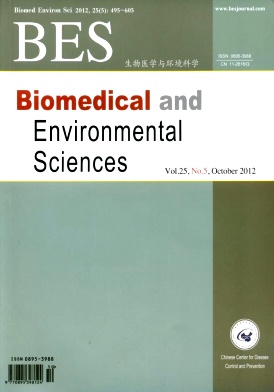Inactivated Sendai Virus Suppresses Murine Melanoma Growth by Inducing Host Immune Responses and Down-regulating β-catenin Expression
doi: 10.3967/0895-3988.2012.05.003
-
Key words:
- HVJ‐E /
- Dendritic cell /
- Melanoma /
- β‐catenin
Abstract: Objective This paper aims to investigate the anti‐tumor mechanism of inactivated Sendai virus (Hemagglutinating virus of Japan envelope, HVJ‐E) for murine melanoma (B16F10). Methods The murine dendritic cells (DCs) were treated with HVJ‐E, and then the cytokines secreted from DCs and costimulation‐related molecules on DCs were measured. Meanwhile, the expression of β‐catenin in HVJ‐E treated murine melanoma cells was detected. In addition, HVJ‐E was intratumorally injected into the melanoma on C57BL/6 mice, and the immune cells, CTL response and tumor volume were analyzed.Results HVJ‐E injected into B16F10 melanoma obviously inhibited the growth of the tumor and prolonged the survival time of the tumor‐bearing mice. Profiles of cytokines secreted by dendritic cells (DCs) after HVJ‐E stimulation showed that the number of cytokines released was significantly higher than that elicited by PBS (P<0.05). The co‐stimulation‐related molecules on DCs were comparable to those stimulated by LPS. Immunohistochemical examinations demonstrated the repression of β‐catenin in B16F10 melanoma cells after HVJ‐E treatment. Meanwhile, real‐time reverse transcription PCR revealed that HVJ‐E induced a remarkable infiltration of CD11c positive cells, chemokine ligand 10 (CXCL10) molecules, interleukin‐2 (IL‐2) molecule, CD4+ and CD8+ T cells into HVJ‐E injected tumors. Furthermore, the mRNA expression level of β‐catenin in the HVJ‐E injected tumors was also down‐regulated. In addition, B16F10‐specific CTLs were induced significantly after HVJ‐E was injected into the tumor‐bearing mice. Conclusion This is the first report to show the effective inhibition of melanoma tumors by HVJ‐E alone and the mechanism through which it induces antitumor immune responses and regulates important signal pathways for melanoma invasion. Therefore, HVJ‐E shows its prospect as a novel therapeutic for melanoma therapy.
| Citation: | ZHANG Quan, YUAN Wei Feng, ZHAI Guo Qin, ZHU Shan Yuan, XUE Zheng Feng, ZHU Hong Fei, XU Xiang Ming. Inactivated Sendai Virus Suppresses Murine Melanoma Growth by Inducing Host Immune Responses and Down-regulating β-catenin Expression[J]. Biomedical and Environmental Sciences, 2012, 25(5): 509-516. doi: 10.3967/0895-3988.2012.05.003 |







 Quick Links
Quick Links
 DownLoad:
DownLoad: